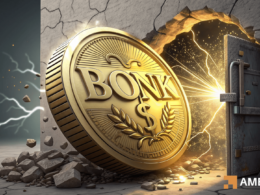Introduction
In a recent testimony, Sam Bankman-Fried, the co-founder of the now defunct crypto exchange FTX, acknowledged the failures that ultimately led to the collapse of the business, resulting in the loss of $8 billion in customer funds. While admitting to numerous mistakes, Bankman-Fried vehemently denied any involvement in fraud.
Rapid Growth and Risk Management
Bankman-Fried, only 31 years old, took the opportunity to defend himself during his criminal fraud trial. He attributed FTX’s downfall to an unraveling risk-management structure, but emphasized that this failure was primarily due to the company’s rapid expansion.
“We had envisioned building the market’s finest product, facilitating progress within the cryptocurrency system,” stated Bankman-Fried while responding to queries from his legal counsel. “Unfortunately, the opposite occurred, and numerous individuals suffered as a result.”
Denial of Fraud Allegations
Addressing the central question of whether he engaged in fraudulent activities, Bankman-Fried promptly replied with a resounding “No.”
Building FTX and Alameda Research
During his testimony, Bankman-Fried dedicated considerable time to outlining the establishment of both FTX and Alameda Research, a sister-hedge fund investment arm. He provided insights into how these entities were intricately connected and how their systems operated cohesively.
Despite acknowledging their shortcomings, Bankman-Fried stressed the importance of recognizing the lessons learned from FTX’s demise.
Allegations Against Alameda: A Risky Bet Gone Wrong
Federal prosecutors have made shocking allegations about the operations of Alameda, claiming that they were granted excessive freedom to use customer funds for high-risk investments. These risky moves eventually led to a catastrophic downfall.
A crucial factor in this debacle was the disabling of certain risk-management systems that FTX typically used to liquidate customer accounts in negative territory. Astonishingly, these systems were turned off for Alameda, giving them unrestrained power to make audaciously perilous moves.
In hindsight, Bankman-Fried, the mastermind behind Alameda, acknowledges that one of his significant regrets was not bringing in a more robust legal and compliance team. However, due to the rapid expansion of FTX, the existing systems struggled to cope with the overwhelming growth.
Bankman-Fried openly admits that the risk engine was not equipped to handle such an exponential surge in activity, leaving it struggling to keep up.
Currently facing charges, Bankman-Fried pleads not guilty to accusations of diverting billions of dollars from customers to Alameda. These funds were allegedly used for risky investments, the purchase of a luxurious $35 million Bahamas home, high-profile political donations, and a star-studded advertising campaign.
To strengthen their case, prosecutors have summoned high-ranking executives from both FTX and Alameda who have already pleaded guilty. These individuals have agreed to testify against Bankman-Fried in exchange for cooperation.
Examining the Collapse of a Crypto Company
Bankman-Fried’s lawyers made an unexpected move by having him testify in his own defense. The goal was to present a clearer picture of how the company crumbled due to its exponential growth and unfavourable market circumstances that shook the crypto industry in mid-2022. Although Bankman-Fried admits to making errors, his defense maintains that there was no intention of committing any criminal acts.







